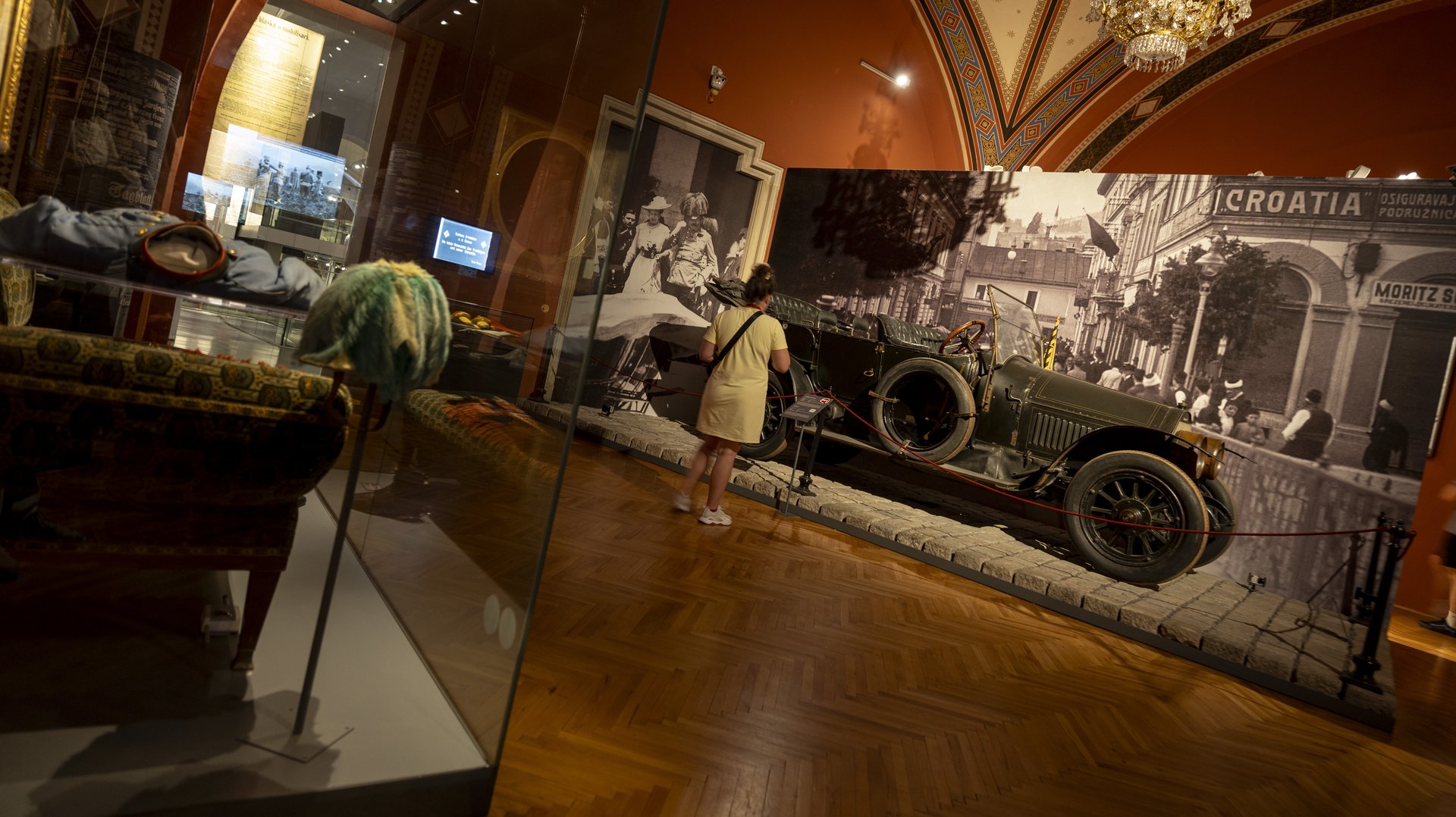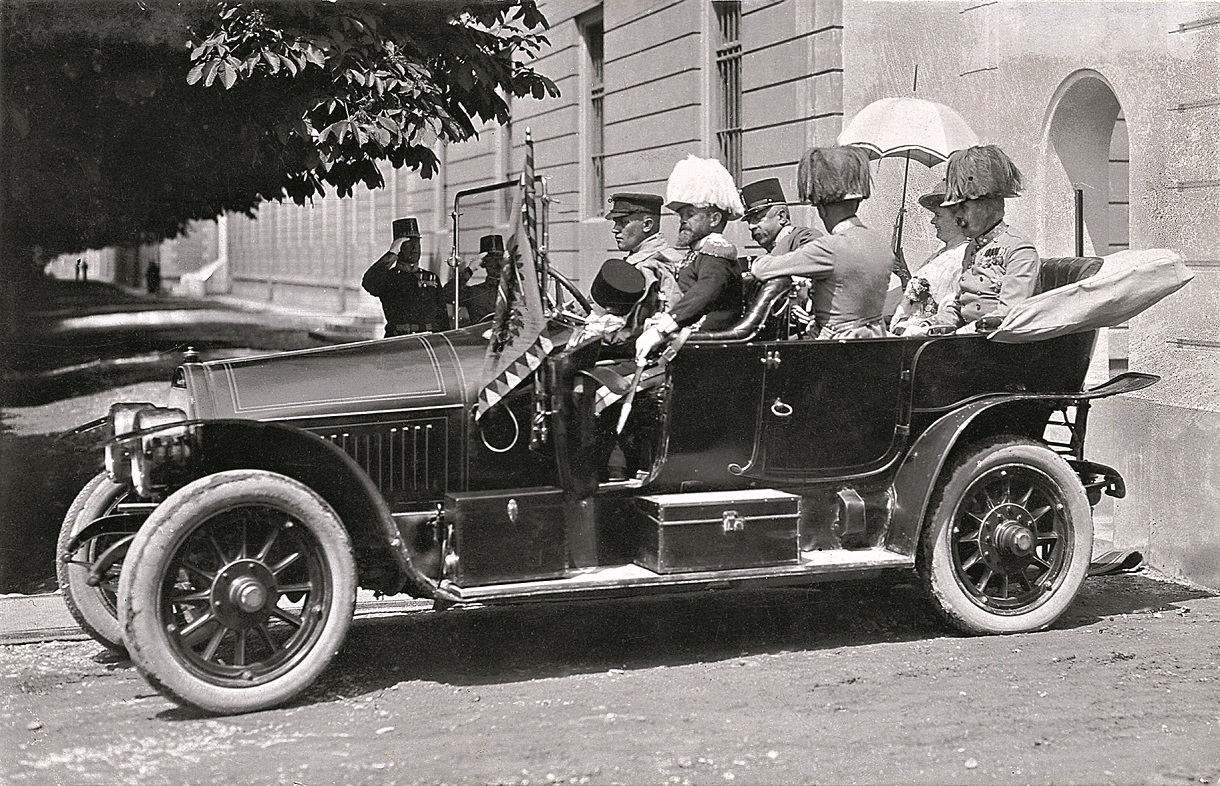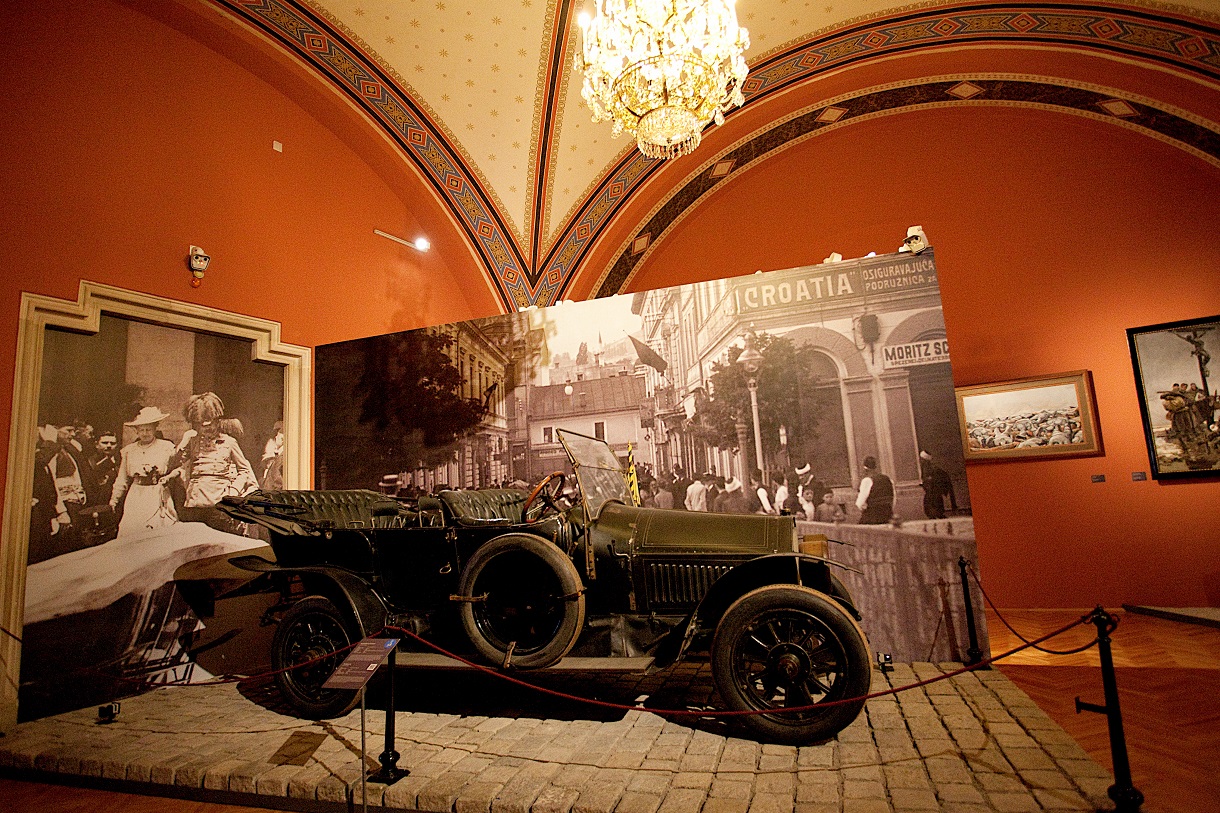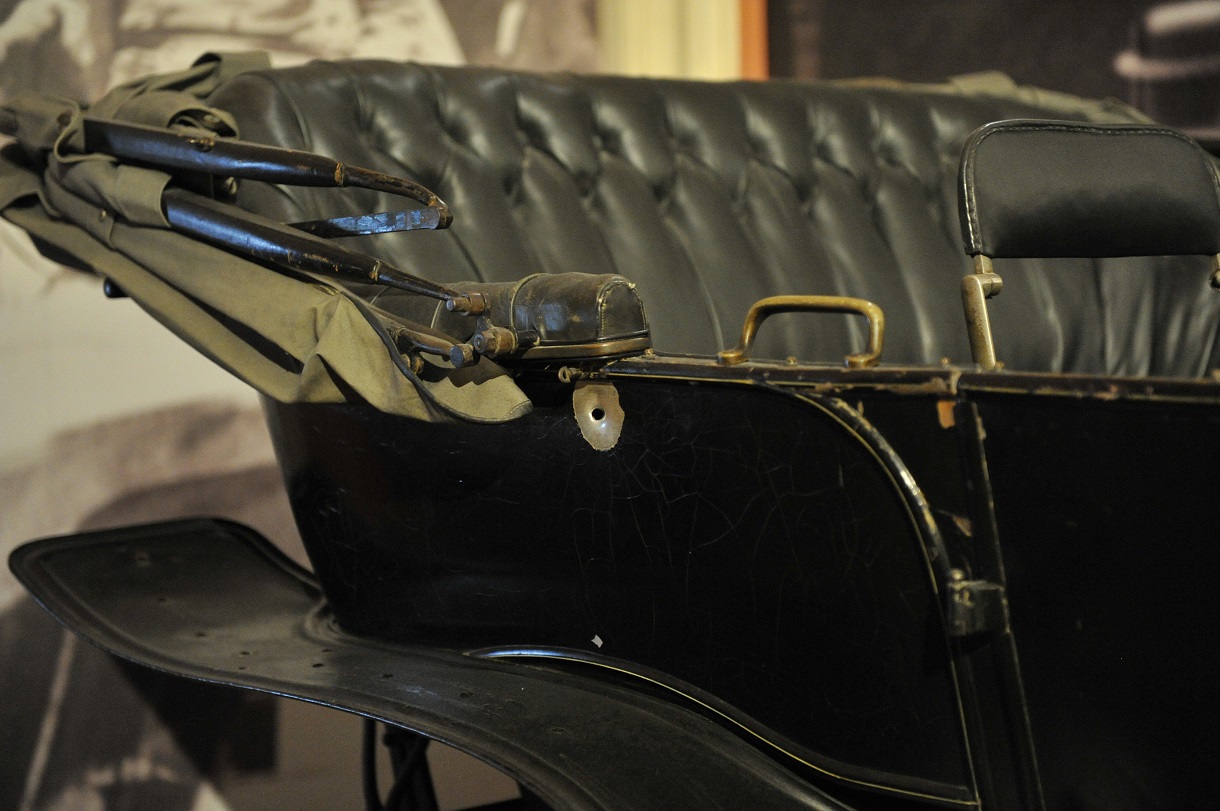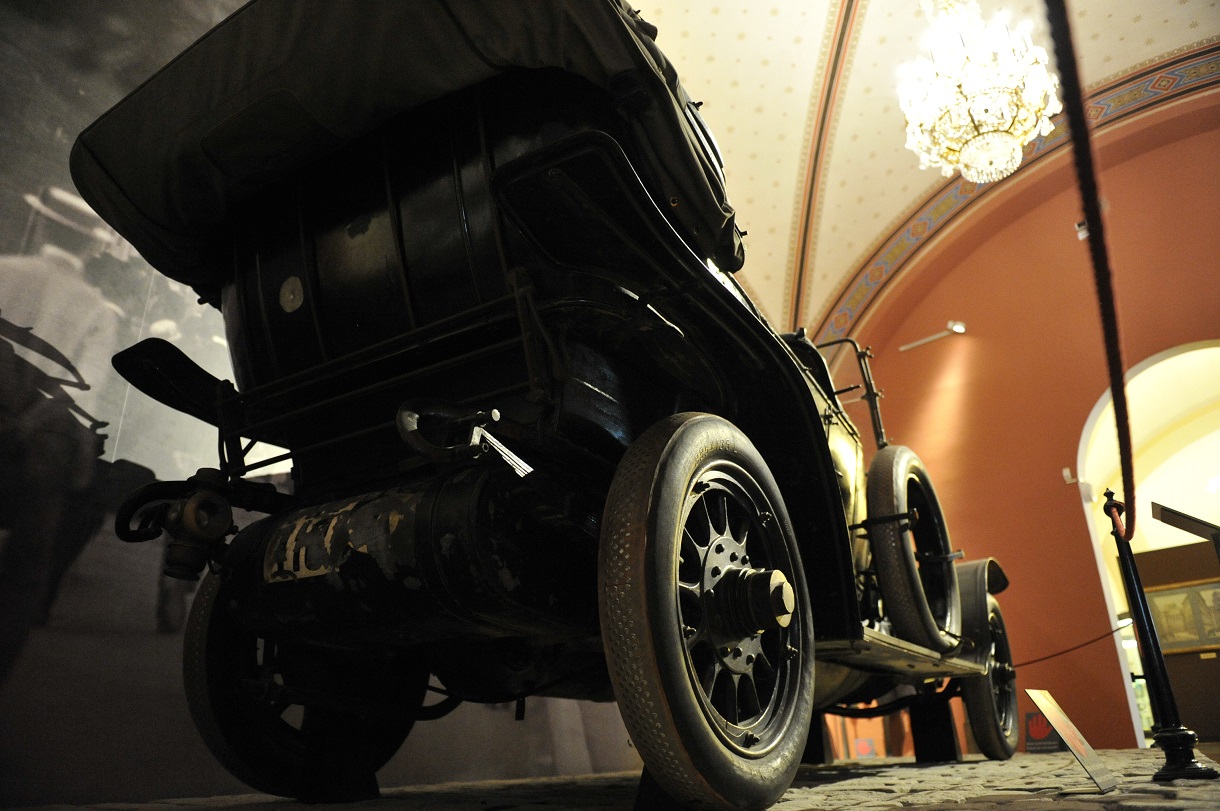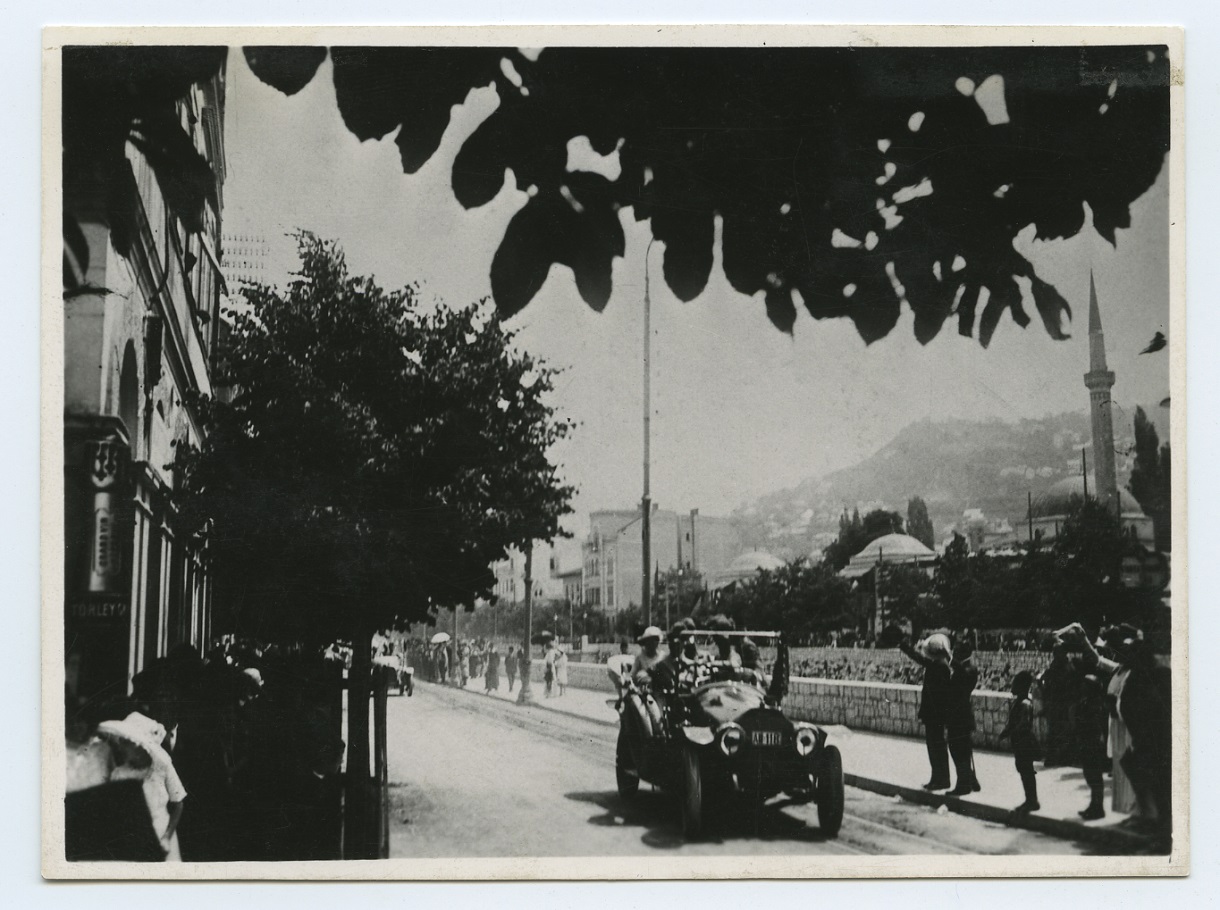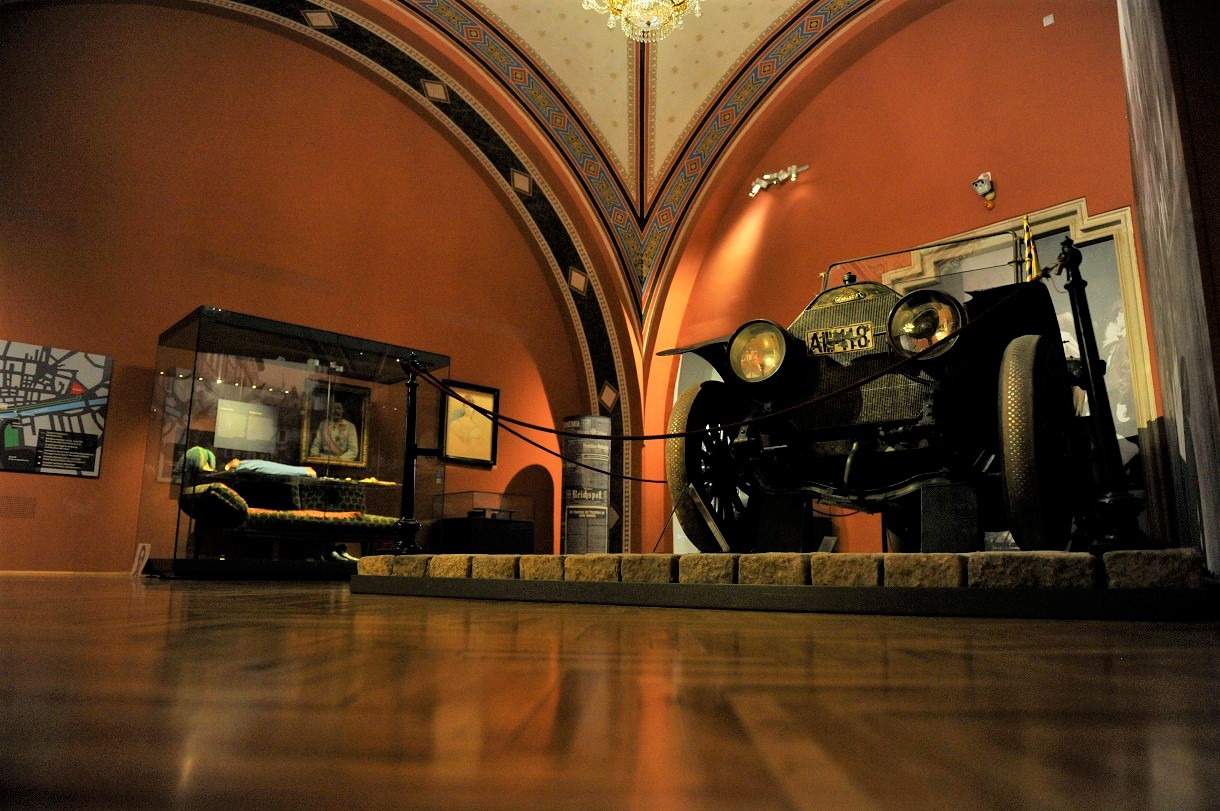Assassination of Franz Ferdinand on June 28th 1914
Exibition area assassination in Sarajevo
Download: Assassination of Franz Ferdinand on June 28th 1914
A separate exhibition area is dedicated to the assassination in Sarajevo, which triggered a diplomatic crisis and ultimately the First World War.
It contains the Gräf & Stift automobile in which the Austro-Hungarian heir apparent Archduke Franz Ferdinand (1863 - 1914) and his wife Sophie Chotek Duchess of Hohenberg (1868 - 1914) were assassinated on 28 June 1914. The marks of two assassination attempts are still clearly visible.
The assassins' weapons are also on display: Browning M.1910/12 pistols and a Kragujevac system hand grenade.
Warnings and the first assassination attempt
On 26 and 27 June 1914, Archduke Franz Ferdinand took part in military exercises of the XV and XVI Corps in Bosnia as the designated inspector general of the Austro-Hungarian armed forces. Protocol demanded a visit to the regional capital of Sarajevo on 28 June 1914.
There were numerous warnings of possible assassination plans at this time. However, Archduke Franz Ferdinand is said to have reacted extremely unimpressed: "I will not allow myself to be put under a glass bowl. Our lives are always in danger. You just have to trust in God." They even drove with the top down.
The first assassination attempt took place on the way to town hall. One of the assassins standing along the route, Nedeljko Čabrinović (1895 - 1916), threw a hand grenade at the vehicle, but Franz Ferdinand was able to deflect it himself. The subsequent explosion damaged the following vehicle and injured several people, including Lieutenant Colonel Erik von Merizzi (1873 - 1917) and an adjutant of General Oskar Potiorek (1853 - 1933), the governor of Bosnia-Herzegovina.
Assassin benefited from last-minute route change
The drive to town hall was continued despite the first assassination attempt, but the visit there cut short. Then it was decided to visit wounded Lieutenant Colonel Merizzi in hospital.
The route was changed at short notice, leading to a disastrous misunderstanding: near Latin Bridge, the first vehicle in the convoy turned right on Franz Joseph Street instead of following Appel quai straight on to the hospital. The following car, driving the heir apparent, also turned right before the convoy could be stopped to resume its intended route.
The fatal shots
Another assassin, Gavrilo Princip (1894 - 1918), standing on this very street corner right at that moment, took his chance and fired the fatal shots with his pistol.
The assassin's first shot was allegedly aimed at General Potiorek but he missed. The bullet pierced the side of the car and hit Duchess Sophie in the abdomen. Only the second shot hit Franz Ferdinand in the side of the throat.
The two victims were quickly driven to the governor’s residence, the Konak of Sarajevo, but it was too late and only their deaths could be recorded there.
Ultimatum to Serbia
As far as the Austro-Hungarian government was concerned, Serbia alone was politically responsible for the assassination of Franz Ferdinand.
An ultimatum was sent to the Serbian government, with demands so harsh that they could not be met in their entirety. Within a few weeks, what initially appeared to be a limited conflict developed into a war of alliances between
- the Central Powers Austria-Hungary, the German Empire and the Ottoman Empire (from autumn 1914) and
- the Entente states: Russia, France, Great Britain and Serbia.
In the following years other states joined the respective alliances, ultimately leading to global war.
